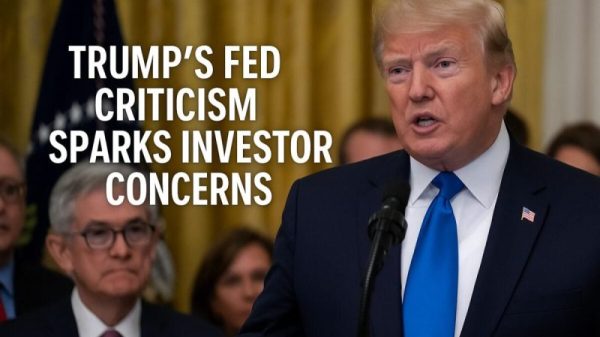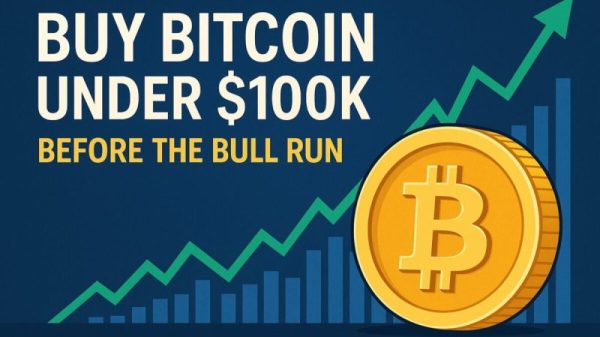While the S&P 500 ($SPX) logged a negative reversal on Wednesday, the Cboe Volatility Index ($VIX), Wall Street’s fear gauge, logged a positive reversal. This is pretty typical: when the S&P 500 falls, the VIX rises.
Here’s what makes it interesting: the VIX has quietly crept up in three of the last four days. Before the midday pivot, the VIX hit its lowest level since February 21, 2025. And while that wasn’t the low in February, it was close. As the chart below depicts, back then, the VIX’s intraday low occurred on February 14, 2025, a few days before the SPX topped on February 19.
It wasn’t a screaming sell signal for equities. The S&P 500 was set to follow through on the big cup-with-handle pattern breakout, even though two straight bullish patterns failed in December and January.
Ultimately, the combination of the S&P 500 failing to get much higher than 6,100 and the VIX bouncing near support set the stage for the market rolling over. It was, of course, news-induced, but the market’s character had been changing since December, when breadth first took a major hit.
So, with the VIX closer to that same support zone now than it has been at any time the last few months and the S&P 500 back above 6,000, the pendulum has swung back near the extreme levels where the fireworks began. But there are two major differences now vs. then.
Bullish Patterns Are Working
Bullish patterns weren’t holding up well in December, January, and February (and then again in March). But they are working now.
Let’s not take this for granted. The S&P 500 starts the day with three live bullish patterns, and the index already hit one upside objective (5,840).
Most importantly, the index has extended above the breakout zones of the two biggest ones by 5.4% and 9%, respectively (see charts below). This means it could endure a not-so-small drawdown, and the patterns (and their upside targets) would remain in place. The index had no such cushion in February.
Still No 1% Declines
Since April 21, the S&P 500 has logged just one 1% decline, which now spans 35 trading days. It had 20 over the prior 71 days since January 6, 2025. That’s a rate of 2.8% vs. 28%. We had literally 10 times more 1% declines from January to April 21.
We didn’t see too many 1% losses in the first few weeks of 2025 either (see chart below). But with the index continuously failing at resistance, it just couldn’t leverage the low-volatility environment like it did from late 2023 through late 2024. As described above, in the last two months, the S&P 500 has been capitalizing on breakouts on low two-way volatility.
So, could all of this completely flip again with a massively surprising “unknown unknown” headline? There’s always that risk. And we know about the big collection of sell signals out there (MACD and Demark).
All of this suggests a respite is due. Bulls and bears seem to agree about that. What they don’t agree upon is the severity of that next pullback. There’s no use in trying to predict how far or how damaging it will be, however. As long as the bullish patterns remain intact, the nascent uptrend has a chance to continue in the months to come.
Zooming In: ARKK’s Strong Run
Let’s take a closer look at one of the more popular growth-focused ETFs: ARK Innovation ETF (ARKK). Despite finishing off its highs, ARKK logged its fourth straight gain yesterday and is now up eight of the last nine trading sessions. Over that time, it has fully leveraged the bull flag we mentioned two weeks ago. The target from that pattern is near $67.
ARKK also logged its third straight trading box breakout in the last few days. So, from a short-term pattern perspective, things have continued to work for the stock.
Indicator-wise, ARKK is now officially overbought for the first time since last December. Over the last year, here’s how the ETF has fared after first reaching overbought territory.
Last July, ARKK hit its summer top just a few days after becoming overbought. In November and December (while ARKK’s upswing continued through mid-February), the ETF pulled back to levels below where the relative strength index (RSI) first hit 70 over the ensuing days/weeks both times.
In other words, this is not the best trading setup for new short-term longs. We expect the risk-reward to improve after the next pullback.
ARKK is also approaching the upper threshold of its big two-year trading channel, which could slow things down soon.
The Bottom Line
The S&P 500 is rising slowly and steadily, volatility is still relatively low, and growth plays like ARKK are looking strong, although they may be due for a pullback in the near term. Keep an eye on the chart patterns that are forming and look for investment opportunities on pullbacks.





















